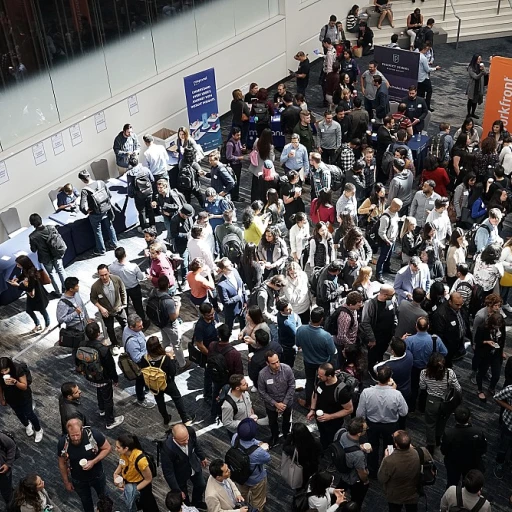Understanding Employee Engagement and HRIS
Defining the Essence of Employee Engagement
Engagement among employees is a cornerstone of organizational success. It represents the emotional commitment a team member feels toward their organization, influencing their willingness to contribute positively to company objectives. When employees are properly engaged, they show higher productivity, increased loyalty, and a greater sense of fulfillment at work.
The HRIS Connection
In an era where digital transformation reshapes the workplace, Human Resources Information Systems (HRIS) have become instrumental in fostering employee engagement. These systems are designed to streamline HR functions, shed light on employee performance, and create a more cohesive work environment. By leveraging the capabilities of HRIS, organizations can tap into a wealth of data that can help customize engagement strategies tailored to individual and team needs.
Fostering Engagement through Technology
Through the robust functionality of HRIS, companies can manage performance more effectively by providing employees with clear goals, regular feedback, and opportunities for development. This not only enhances engagement but also aligns personal ambitions with organizational objectives. To understand how HRIS contributes to enhancing employee performance, HR professionals must explore how these systems support both structured and flexible performance management techniques.
As we delve further, we'll explore more dimensions where HRIS not only enhances engagement but also improves the overall employee experience, supports data-driven decision-making, helps maintain work-life balance, and recognizes top performers to boost morale and retention. With HRIS, employee engagement is no longer just an HR goal but a comprehensive strategy to drive organizational success.
The Intersection of Technology and Human Performance
In today's fast-paced business world, the alignment of human resources technology with performance management is crucial for success. As organizations strive to keep up with the dynamic changes in the workforce, Human Resource Information Systems (HRIS) have become indispensable tools for managing employee performance effectively. HRIS not only streamlines administrative tasks but also plays a significant role in fostering a culture of continuous improvement and engagement.
HRIS facilitates performance management by enabling real-time feedback and communication between managers and employees. This promotes transparency and ensures that employees are aware of their performance metrics and growth opportunities. By setting clear objectives and tracking progress, HRIS helps employees understand their contributions to the organization's overall goals, thereby boosting engagement levels.
Moreover, with the integration of advanced analytics and reporting features, HRIS provides managers with valuable insights into employees' strengths and areas for improvement. This data-driven approach allows for more personalized and effective development plans tailored to individual needs. Consequently, employees feel valued and motivated to achieve their best.
Furthermore, HRIS plays a vital role in automating performance appraisals, making the process more efficient and reducing bias. By standardizing criteria and eliminating manual errors, HRIS ensures a fair and objective assessment of employee performance. This transparency builds trust and strengthens the employer-employee relationship, ultimately enhancing engagement.
In synergy with other aspects like enhancing the employee experience, as discussed in another part of this article, HRIS creates an environment where employees feel supported and driven to excel. As organizations aim to harness the full potential of their workforce, incorporating HRIS into performance management strategies sets the foundation for a productive and engaged work environment.
Enhancing Employee Experience with HRIS
Transforming the Employee Experience with HRIS
In today's fast-paced work environment, enhancing the employee experience is crucial for fostering engagement and retention. A Human Resources Information System (HRIS) plays a pivotal role in this transformation by streamlining processes and creating a more connected workplace.
One of the key ways HRIS enhances the employee experience is through personalized and accessible self-service portals. These portals empower employees to manage their own information, such as updating personal details, accessing pay stubs, and requesting time off, without the need for HR intervention. This autonomy not only saves time but also increases employee satisfaction by reducing administrative bottlenecks.
Moreover, HRIS facilitates seamless communication and collaboration among team members. By integrating tools that support messaging, project management, and feedback systems, employees can stay connected and engaged, no matter where they are working from. This connectivity is essential in maintaining a cohesive company culture, especially in remote or hybrid work settings.
Another significant advantage is the ability to tailor learning and development opportunities. HRIS can track employee progress and suggest personalized training programs based on individual career goals and performance metrics. This targeted approach to professional growth not only enhances skills but also demonstrates an organization's commitment to employee development.
For more insights on how HRIS can transform your organization, explore our article on
unlocking the potential of HRIS.
Data-Driven Insights for Better Engagement
Data-Driven Insights Drawing the Roadmap
In the thriving realm of human resources, HRIS serves as a treasure trove of valuable data, paving the path to enhanced employee engagement. The significance of data-driven insights cannot be overstated, as they enable HR professionals to make informed decisions tailored to their workforce's unique needs. By harnessing the analytical capabilities of HRIS, organizations can unearth current trends, pinpoint areas for improvement, and, most importantly, strategically navigate the evolving landscape of employee engagement.
With HRIS, every intricate facet of the employee lifecycle comes to life through real-time data analysis. From recruitment insights to onboarding trends, performance metrics to employee satisfaction scores, HRIS offers an overarching view of the entire employee journey. This rich tapestry of data is invaluable for HR leaders seeking to unravel patterns and understand what drives engagement within their organizations.
By integrating data-driven insights into performance management and the overall employee experience, companies can spearhead initiatives that foster genuine engagement and drive robust performance. HRIS not only aids in the identification of high-performing individuals but also highlights employees who could benefit from additional support and development opportunities. As a result, organizations can implement targeted strategies that resonate with individual employee needs, contributing to a more engaged and motivated workforce.
Adaptability and agility are paramount in maintaining a thriving workplace culture, and HRIS equips businesses with the tools necessary to stay ahead of the curve. Through its comprehensive reporting capabilities, HRIS allows HR teams to meticulously track progress and measure the impact of employee engagement initiatives. This relentless focus on data-driven strategies lays the foundation for an environment where employees are not just engaged but truly committed.
Prioritizing Work-Life Integration with HRIS
In the modern workplace, maintaining a healthy work-life balance is crucial for employee satisfaction and productivity. HR Information Systems (HRIS) play a vital role in facilitating work-life integration by providing tools and features that accommodate flexible working arrangements, which are increasingly demanded by today's workforce.
One significant way HRIS supports work-life balance is through streamlined time and attendance management. By allowing employees to log their hours and manage time off remotely, HRIS ensures that they have the flexibility to manage their schedules effectively. This autonomy not only boosts morale but also enhances productivity, as employees can work when they are most efficient.
Moreover, HRIS can offer personalized dashboards where employees can keep track of their assignments, deadlines, and upcoming time off. This transparency helps team members prioritize tasks and manage their workload without feeling overwhelmed. In this way, HRIS assists in maintaining a balanced workflow that aligns with both personal and organizational goals.
Another crucial feature is the ability to facilitate remote work setups seamlessly. By integrating collaboration and communication tools within the HRIS, businesses can ensure that their employees stay connected with their teams, regardless of their physical location. This connectivity supports an inclusive work environment where employees feel engaged and valued.
By leveraging the data-driven insights gathered through HRIS, organizations can identify trends in employee engagement and address any potential issues before they affect productivity or well-being. Analyzing this data allows management to make informed decisions about implementing or improving flexible work policies, thereby fostering an organizational culture that values employee satisfaction and retention.
Overall, HRIS serves as a powerful ally in promoting work-life balance, providing the necessary tools to create an adaptable and supportive workplace environment. Through thoughtful utilization of these systems, companies can ensure happier, more engaged employees, leading to a more successful organization.
Recognition & Rewards: A Key to Retention
Recognition Programs Elevate Engagement
One crucial aspect of maintaining a motivated and committed workforce is through recognition and rewards. By integrating these elements within a Human Resource Information System (HRIS), organizations can play a pivotal role in keeping employees engaged. Recognition and reward systems, when seamlessly embedded into HRIS platforms, provide managers with the tools to acknowledge achievements and celebrate milestones, both big and small.
HRIS allows for a well-structured recognition program, which is essential for affirming the efforts of employees and reinforcing the behaviors that align with company values. This systematic approach ensures consistency and fairness in recognizing employees' contributions, preventing bias, and enhancing morale across teams. Furthermore, the inclusion of peer recognition features can foster a collaborative environment where employees feel valued not just by their superiors, but also by their colleagues.
Enhanced Retention Through Timely Rewards
Timely recognition and appropriate rewarding of employees' efforts can have a significant impact on retention rates. When integrated with performance management features, HRIS ensures that recognition aligns with performance data, thereby promoting transparency and meritocracy. This alignment enables managers to make informed decisions regarding promotions, bonuses, and other incentives based on reliable data, as discussed in the importance of data-driven insights for enhancing engagement.
Moreover, HRIS enables companies to customize their reward systems to suit individual preferences, thereby increasing the personal relevance and impact of these rewards. Whether it's through digital badges, bonus structures, or personalized gifts, tailored recognition can go a long way in making employees feel appreciated and motivated to stay with the organization longer.
Acknowledging the "Whole" Employee
While traditional recognition systems often focus solely on work performance, modern HRIS platforms allow for a more holistic approach. By recognizing contributions that might go beyond immediate job duties, such as participation in diversity initiatives or team-building efforts, organizations can reinforce a culture that values all facets of employee involvement. This inclusive approach not only boosts engagement but also supports the broader organizational culture.
When employees perceive recognition as sincere and inclusive, their engagement levels are likely to rise, translating into lower turnover rates and a more positive workplace atmosphere. In line with balancing work and life obligations through HRIS tools, offering flexible recognition that considers employees' personal circumstances further reinforces their commitment and satisfaction.
Integrating recognition and rewards into HRIS not only boosts employee retention but also nurtures a thriving workplace environment where employee contributions are celebrated and rewarded comprehensively.










